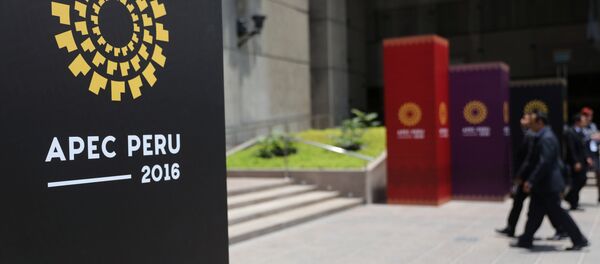MOSCOW (Sputnik) — The ambitious free trade deal, covering 40 percent of the global economy, was signed last February by Australia, Brunei, Canada, Chile, Japan, Malaysia, Mexico, New Zealand, Peru, Singapore, Vietnam, and the United States. The election of free-trade-deal skeptic Donald Trump as US president cast doubt on its ratification.
"It’s not simply leadership matters, we are talking about economic costs of the TPP’s collapse, trade and investment losses. Now the countries that have been disappointed by the US stance will be drawn into China’s sphere of influence," Valery Kistanov, from Russia’s Institute of Far Eastern Studies, said.
Yakov Berger, another expert on the Asia-Pacific from the Moscow-based institute, agreed that the United States could cede its regional influence to China, but said he doubted China would share TPP partners’ goals after being previously excluded from talks for political reasons,
"China is a huge growing market, unlike the US market, which is unlikely to expand at the same pace …. These [TPP] countries are sustained by exports," Berger said. "Now that the US wants to step aside, they are looking for a replacement, which is barely possible because not only commercial interests but also geopolitical interests are at play. And they are different from those of China."
Liu Ying, an expert from the Financial Policy Research Center at China’s Renmin University, said Beijing appeared to have doubts if it should pursue the same economic path as that suggested in the TPP.
"I think China and the United States, the biggest developing and developed countries respectively, should cooperate on a free trade zone within the Asia-Pacific, specifically amid sluggish trade, instead of trying to replace or exclude each other," Liu Ying said.
China has been promoting a rival free trade pact in the Asia-Pacific region, the so-called Free Trade Area of the Asia-Pacific pact (FTAAP). Last Sunday, APEC leaders endorsed a collective study on its feasibility at a summit in Lima, Peru.


